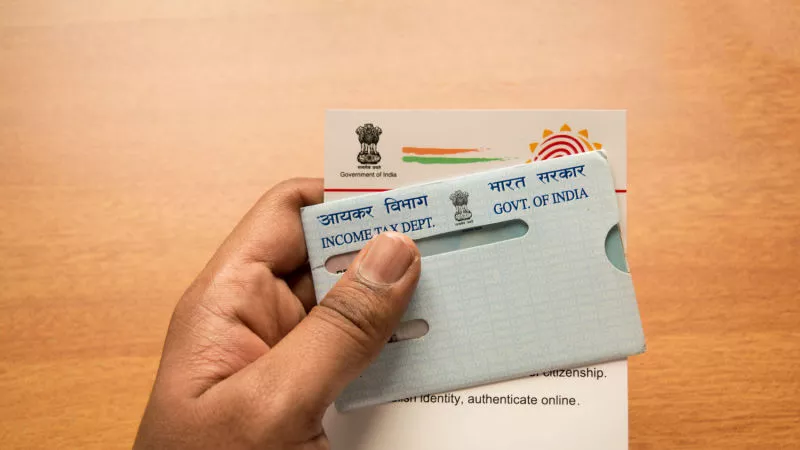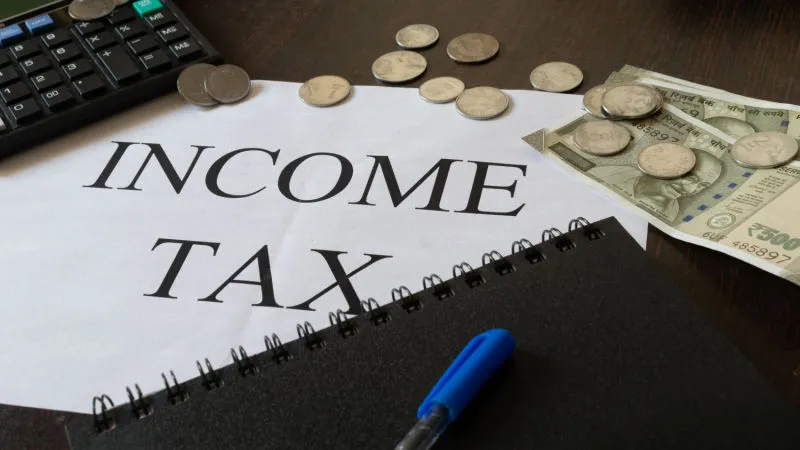
Every year when the time comes to wind up the financial year, lakhs of taxpayers scramble to make investments to reduce their tax liability. The most common option used by taxpayers is section 80C of the Income Tax Act, 1961. It is often considered to be a one stop shop or most favourite destination of taxpayers, especially for last minute tax saving investments, that can be made to reduce the tax burden.
Given below are the details of this section 80C of the Income Tax Act.
Meaning of Section 80C deductions on investment
Section 80C comes under Chapter VIA of the Income Tax Act which is dedicated to the various deductions that can be availed by the taxpayers to reduce their tax liability. There are many investments that are included under section 80C.
Union Budget 2023 update regarding Section 80C
Finance Minister Nirmala Sitharaman during her Union Budget 2023 speech did not make any changes to the existing rules regarding Section 80C. Hence, if you are following the old tax regime, you will be able to avail yourself of deductions of up to Rs.1.5 lakh. However, it is likely that the deductions limit under Section 80C will be raised in Union Budget 2023 as compared with Rs 1.5 lakh currently.
Maximum amount of deduction allowed under Sec 80C
These investments give the benefit of deduction up to a maximum of Rs. 1,50,000 from the gross total income of the taxpayer. Earlier this limit was up to Rs. 1,00,000 but from FY 2014-15, the limit under this section was increased to Rs.1,50,000
List of investments that can be included under Section 80C
As mentioned above, there are many investments that can be covered under section 80C. The maximum deduction allowed under section 80C for Rs 1,50,000 is cumulative of all the investments included under this section. Some of such investments that you can think of investing in are mentioned below.
Investment in a fixed deposit of a bank with a lock-in period of 5 years
Such fixed deposits can be held with any scheduled banks in India but they will have to be locked in for 5years. Any withdrawal of the FD is not allowed before completion of the term
Investment in EPF or VPF
Investment in EPF and VPF are some of the safest and easiest investment options. Investors can earn interest on such investment and the maturity amount is tax-free at the hands of the investors. But with the budget of 2021-22, interest earned on EPF & VPF investments where the contribution exceeds Rs 5lakh are taxable. So, if you have been contributing high amounts towards VPF/EPF you may want to rethink your investments.
Investment in ELSS funds
ELSS funds are tax saving mutual funds that have a minimum lock-in period of 3 years. Investment in these funds can be through lump sum amounts or SIPs. Capital gains at the time of redemption are tax-free up to Rs.1,00,000 beyond which they are taxed at 10%.
Investment in PPF
PPF is another government scheme where investment is eligible for deduction under section 80C. PPF belongs to the EEE category of investment where contribution, interest earned and maturity proceeds are all exempt from taxation.
Investment in NSC
NSC is another tax saving instrument with a lock-in period of 5 years. The interest earned each year is reinvested till the time of maturity. The current interest rate (June 2021) for NSC is 6.8% per annum.
Investment in NPS
80C deduction is also available for any contribution towards an NPS account. The maximum deduction for such a contribution is Rs.1,50,000 under section 80C and section 80CCD(1).
Contribution to Sukanya Samriddhi Account
This is a government scheme where taxpayers can open an account in the name of their minor daughters (maximum 2 daughters) for a maximum period of 15 years. Contributions made to this account are eligible for deduction under section 80C up to Rs. 1,50,000 and earn interest at the rate of 7.6% per annum.
Contribution to Senior Citizen Savings Scheme 2004
This is a government scheme designed specially for senior citizens where contribution to the scheme is eligible for tax deduction up to Rs.1,50,000. The current rate of interest under this scheme is 7.4% per annum
Investment in Infrastructure Bonds
Infrastructure bonds are long term bonds having maturity of 10-15 years. This is another eligible contribution to get deduction under section 80C.
Investment in 5 year Post Office Time Deposit Schemes
Post Office Time Deposit Schemes are like bank fixed deposits with a lock-in period of 5 years. The interest earned on such deposits is compounded annually. The current interest rate for POTD is 7.1% per annum.
Investment in NABARD Rural Bonds
These bonds are issued by the government from time to time. Contribution to these bonds also qualifies for deduction under section 80C up to Rs. 1,50,000
Investment in ULIPs
ULIPs are Unit Linked Insurance Plans where investors get the benefit of life cover along with tax deduction up to Rs 1,50,000. From 01 Feb 2021, the maturity proceeds of ULIPs that have a yearly premium of more than Rs 2.5 lakhs will be taxable. But if these proceeds are received on the death of the policyholder, the same will not be taxable
Repayment of home loan principal
Payment of principal amount of home loan qualifies for a deduction under section 80C along with other eligible investments or contributions. The interest component of the home loan can be claimed as deduction under section 24 of the Act up to Rs. 2,00,000.
Payment of Life Insurance premiums
This deduction is available to individuals and HUFs. Payment towards life insurance of self, spouse or children is eligible for deduction under this section. Taxpayers can include premiums paid for multiple policies provided the maximum deduction is within the limit of section 80C and for eligible persons.
Payment of Stamp Duty and Registration Charges for home
Addition of Stamp duty and registration charged for purchase of any house property to section 80C deduction reduces the burden of these expenses. Apart from these charges, deduction is also available for any other charges directly related to transfer of house property. The maximum deduction allowed along with other eligible payments is Rs 1,50,000
Payment of children’s education expenses
Payment of children’s education fees is also eligible for deduction under this section among other payments. This deduction is available for payment of education fees to any school, college or university provided it is located in India.
Extension of Section 80C
Apart from the above investments, Section 80C also includes section 80CCC and section 80CCD. These sections are viewed as an extension of section 80C. The overall deduction limit of section 80C including section 80CCC and 80CCD is Rs.1,50,000.
Given below are the details of these sections.
Section 80CCC – Deduction for Life Insurance and annuity plan
Section 80CCC provides tax deduction specifically for any investment in pension funds. The approved funds under this category can be set by LIC or any other insurer under a pension scheme that is approved by IRDAI. Deduction can be availed for any contribution in any existing annuity plan or any new plan taken in any financial year (provided the total limit of deduction is not exceeded beyond Rs.1,50,000.
Section 80CCD – Deduction for NPS
While section 80CCC caters specifically to investment in pension funds, section 80CCD is specifically for a deduction on investments in NPS (National Pension System). Deduction under section 80CCD(1) is available up to Rs. 1,50,000 after considering section 80C as well. The maximum deduction allowed under this section is calculated to be lower of the following,
- 10% of salary (in case of salaried employee)
- 20% of gross total income (in case of self employed persons)
- Rs. 1,50,000
However, investors are benefited with an additional deduction of Rs.50,000 under section 80CCD(1B). This additional deduction is available to only investors holding Tier 1 NPS accounts.
Investment in Atal Pension Yojana Scheme is also eligible for deduction under section 80CCD(1) of the Act.
Apart from the above benefits, section 80CCD(2) provides for deduction on account of employer’s contribution. The amount of deduction is calculated to be lower of
- up to 14% of basic salary and dearness allowance. ( In case the employer is Central Government)
- up to 10% of basic salary and dearness allowance (in case of other employer)
- Amount actually contributed
This benefit can be availed by salaried employees and not self-employed individuals.
FAQs on Sec 80C deductions
Deduction under section 80C can be claimed by individual taxpayers and HUFs (Hindu Undivided Families). Furthermore, deduction under section 80CCD and section 80CCD can be availed by only individual taxpayers.
No. The maximum deduction under section 80C is Rs. 1,50,000 including all the eligible investments or contributions. Additional deduction of Rs. 50,000 can be claimed under section 80CCD only for an investment in NPS provided it meets the conditions set in this regard.
3. Who is not eligible for tax deduction under section 80C?
Deduction under section 80C is not available to corporates, trusts, partnership firms, co-operatives or any other business entities.
Related Articles



















